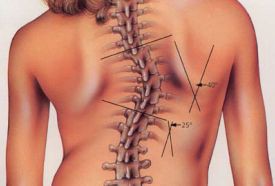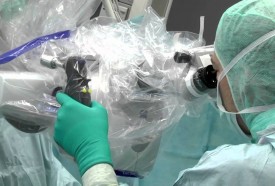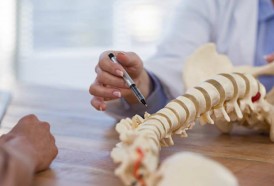Deformity

The most common abnormality is scoliosis, lordosis and kyphosis.
Scoliosis is a skeletal abnormality in the form of spinal curvature. As many as 75-85 % of cases of scoliosis are idiofatik, which is a disorder of unknown cause. While 15-25 % of cases of scoliosis are other side effects caused due to suffering from certain disorders , such as muscular dystrophy, Marfan syndrome, Down syndrome, and other diseases. The various disorders causing muscle or nerves around the spine does not function perfectly and causing the spine becomes curved shape.
Kyphosis, also called hunchback, is a common condition of a curvature of the upper back. It may be the result of degenerative diseases (such as arthritis), developmental problems (the most common example is Scheuermann's disease), osteoporosis with compression fractures of the spine, and / or trauma.
Within the meaning of disability, it is the pathological curving of the spine, where parts of the spinal column lose some or all of their lordotic profile. This causes a bowing of the back, is considered a back bend and difficulty breathing.
Lordosis is a condition in which the spinal lumbar (spine just above the buttocks) curved inwards. Lordotik little curvature is normal. Too much curvature lordotik called lordosis. In normal people, the normal spine when viewed from the rear looks straight. However, patients with lordosis spine back looks curved. The cause of lordosis is unknown. However, lordosis posture associated with bururk or congenital or pelvic problems.




